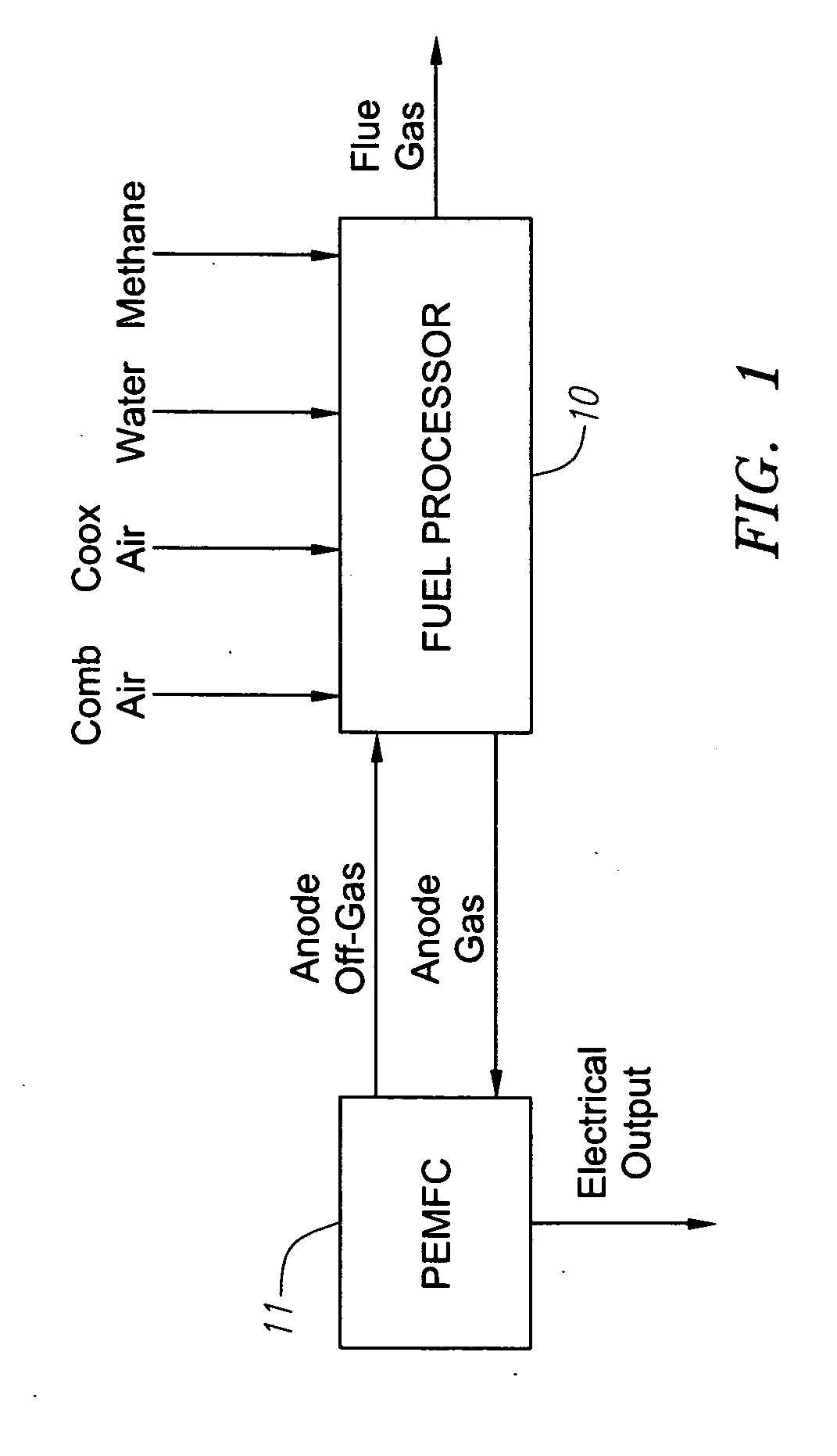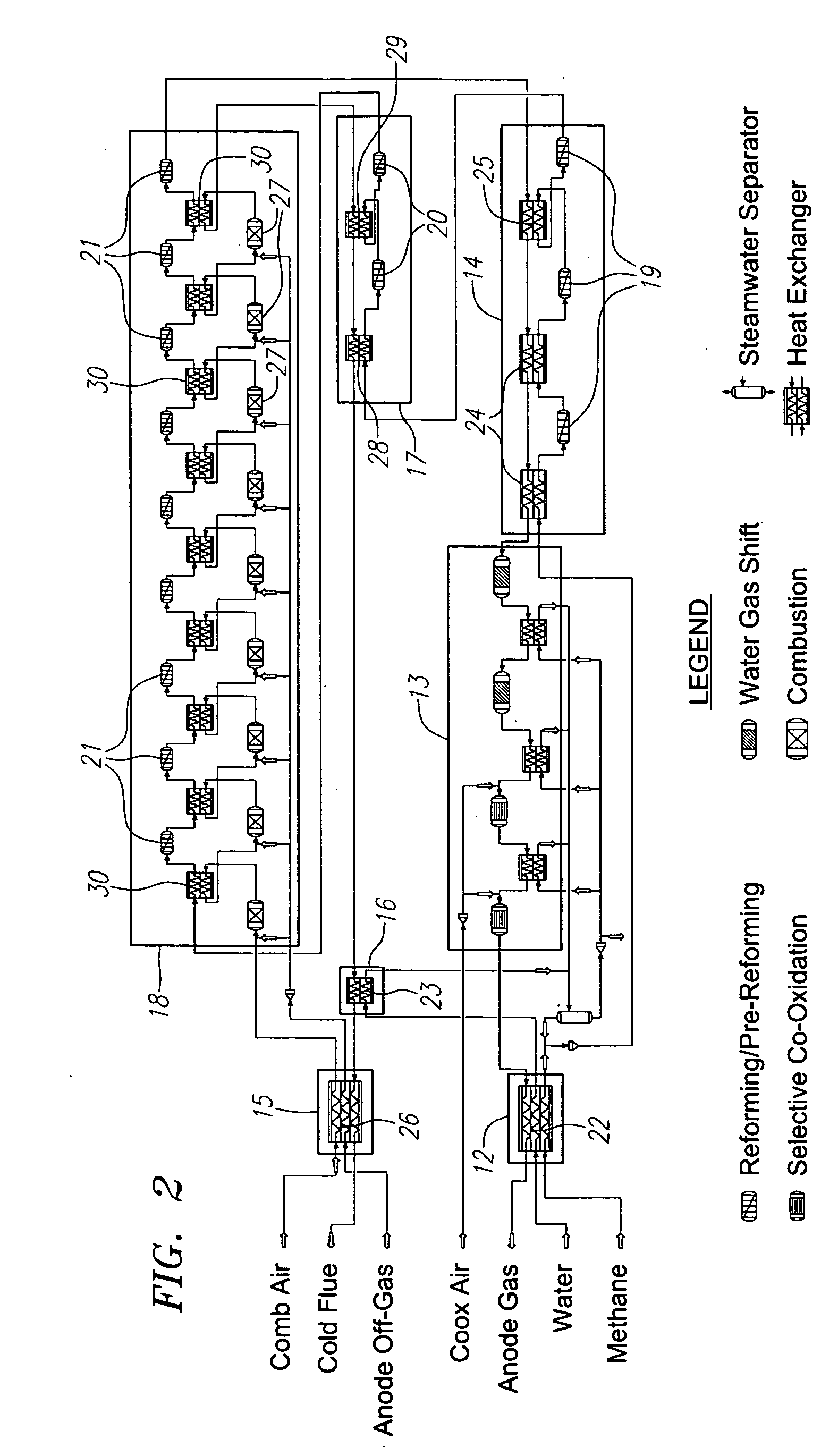Reformer apparatus and method
a reformer and apparatus technology, applied in the field of reformer apparatus and method, can solve the problems of low hydrocarbon conversion, complex control system comprising multiple control loops, and ineffective reforming on a smaller scale, and achieve the effect of optimizing the reforming conditions, cost-effectiveness, and high efficiency
- Summary
- Abstract
- Description
- Claims
- Application Information
AI Technical Summary
Benefits of technology
Problems solved by technology
Method used
Image
Examples
embodiment 101
[0175]An alternate reformer embodiment 101 is now described with reference to FIG. 11, with components similar to those in FIG. 10 bearing the same reference numerals. Reformer 101 differs from reformer 100 in that it uses a six-stream heat exchanger 128a instead of the five-stream heat exchanger 128 in FIG. 10.
[0176]Another difference is that fuel line 211 in reformer 101 may split into two lines 211aa and 211b that are both preheated in heat exchanger 128a (as opposed to only line 211b being preheated in heat exchanger 128 of reformer 100). However, fuel line 211aa may eventually join with the flue gas exiting reformer 110 in line 261, at point 263. These variations preferably increase efficiency as more waste heat, from the syngas effluent, may be recovered by the cold feed streams.
[0177]C. Alternate Reformer System
embodiment 102
[0178]An alternate reformer embodiment 102 is now described with reference to FIG. 12. As mentioned previously, reformer 102 does not include combustion chamber 144 prior to heat exchanger 126 as does reformer 100 of FIG. 10. Thus the additional heat that could be imparted to the water in heat exchanger 126 owing to the combustion is not available.
[0179]The reformer embodiment 102 is preferably suited to operate with higher maximum syngas temperatures, e.g., approaching 900° C. At this higher temperature, the additional steam raised with the assistance of combustion chamber 144 in FIG. 10 is not required as reforming at a higher temperature provides higher methane conversion, for a given steam-to-carbon ratio.
[0180]D. Fuel Efficiency
[0181]An aspect of the current invention relating to increased fuel efficiency is now further described.
[0182]Downstream of reformer 110, heat is available from the effluent streams of the reforming process, which are syngas (product) in line 251 and flu...
PUM
| Property | Measurement | Unit |
|---|---|---|
| thickness | aaaaa | aaaaa |
| thickness | aaaaa | aaaaa |
| radial depth | aaaaa | aaaaa |
Abstract
Description
Claims
Application Information
 Login to View More
Login to View More - R&D
- Intellectual Property
- Life Sciences
- Materials
- Tech Scout
- Unparalleled Data Quality
- Higher Quality Content
- 60% Fewer Hallucinations
Browse by: Latest US Patents, China's latest patents, Technical Efficacy Thesaurus, Application Domain, Technology Topic, Popular Technical Reports.
© 2025 PatSnap. All rights reserved.Legal|Privacy policy|Modern Slavery Act Transparency Statement|Sitemap|About US| Contact US: help@patsnap.com



